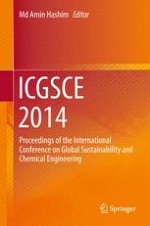2015 | OriginalPaper | Chapter
Production of Glucose, Galactose and Mannose from the Skins of Durian and Mangosteen
Authors : Zamila Mohd Senu, Maryam Husin, Abd Rashid Li, Rusnah Samsuddin, Mohd Radzi Ahmad, Nik Roslan Nik Abd Rashid, Nur Zalikha Mohd Taza
Published in: ICGSCE 2014
Publisher: Springer Singapore
Activate our intelligent search to find suitable subject content or patents.
Select sections of text to find matching patents with Artificial Intelligence. powered by
Select sections of text to find additional relevant content using AI-assisted search. powered by
